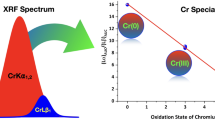Abstract
Cerenkov luminescence imaging (CLI) is a relatively new optical molecular imaging technique. The nature of Stokes shift in quantum dots (QD) can be used to improve the quality of CLI. However, the interaction mechanism of QD with Cerenkov light remains unclear. In this work, the interaction mechanism between QD and radionuclides emitting β rays, γ rays, and Cerenkov light was investigated. The 96-well plates were used to test the different levels of radioactivity of radionuclides with different QD concentrations. Transparent vials were used to determine the relationship between QD fluorescence intensity and the distance from QD to the radionuclide. In addition, black paper was used to block the transmission of Cerenkov light through the QD vials. A linear relationship was found between the number of photons and the radioactivity of radionuclides when the QD concentration was kept constant. Similarly, the number of photons was linearly related to the QD concentration when the radioactivity of radionuclides was kept constant. Furthermore, with the increases in the distance between radionuclides and quantum dots, the number of photons was exponentially decreased. Meanwhile, the number of photons emitted from QD excited by Cerenkov light accounted for 20% the total number of photons excited by 131I radionuclide. The result proved that QD was not only excited by Cerenkov light but also by other rays.
Similar content being viewed by others
References
Robertson R, Germanos M S, Li C, et al. Optical imaging of Cerenkov light generation from positron-emitting radiotracers. Phys Med Biol, 2009, 54: N355
Liu H, Ren G, Miao Z, et al. Molecular optical imaging with radioactive probes. PLoS One, 2010, 5: e9470
Park J C, An G I, Park S I, et al. Luminescence imaging using radionuclides: A potential application in molecular imaging. Nucl Med Biol, 2011; 38: 321–329
Hou X, Tang X, Geng C, et al. Feasibility and improvement of biological imaging technique based on Cerenkov effect. Nucl Tech, 2014, 37: 070202
Spinelli A E, Boschi F. Optimizing in vivo small animal Cerenkov luminescence imaging. J Biomed Opt, 2012, 17: 0405061–0405063
Li C, Mitchell G S, Cherry S R. Cerenkov luminescence tomography for small-animal imaging. Opt Lett, 2010; 35: 1109–1111
Dothager R S, Goiffon R J, Jackson E, et al. Cerenkov radiation energy transfer (CRET) imaging: A novel method for optical imaging of PET isotopes in biological systems. PLoS One, 2010, 5: e13300
Gammon S T, Villalobos V M, Roshal M, et al. Rational design of novel red-shifted BRET pairs: Platforms for real-time single-chain protease biosensors. Biotechnol Progr, 2009; 25: 559–569
Xu Y, Piston D W, Johnson C H. A bioluminescence resonance energy transfer (BRET) system: Application to interacting circadian clock proteins. Proc Natl Acad Sci USA, 1999; 96: 151–156
Jares-Erijman E A, Jovin T M. FRET imaging. Nat Biotechnol, 2003; 21: 1387–1395
Spinelli A E, D’Ambrosio D, Calderan L, et al. Cerenkov radiation allows in vivo optical imaging of positron emitting radiotracers. Phys Med Biol, 2010, 55: 483
Ruggiero A, Holland J P, Lewis J S, et al. Cerenkov luminescence imaging of medical isotopes. J Nucl Med, 2010; 51: 1123–1130
Lewis M A, Kodibagkar V D, Öz O K, et al. On the potential for molecular imaging with Cerenkov luminescence. Opt Lett, 2010; 35: 3889–3891
Xu Y, Chang E, Liu H, et al. Proof-of-concept study of monitoring cancer drug therapy with cerenkov luminescence imaging. J Nucl Med, 2012; 53: 312–317
Author information
Authors and Affiliations
Corresponding author
Rights and permissions
About this article
Cite this article
Tang, X., Hou, X., Shu, D. et al. Research on the interaction mechanism between quantum dots and radionuclides for the improvement of Cerenkov luminescence imaging. Sci. China Technol. Sci. 58, 1712–1716 (2015). https://doi.org/10.1007/s11431-015-5897-x
Received:
Accepted:
Published:
Issue Date:
DOI: https://doi.org/10.1007/s11431-015-5897-x




